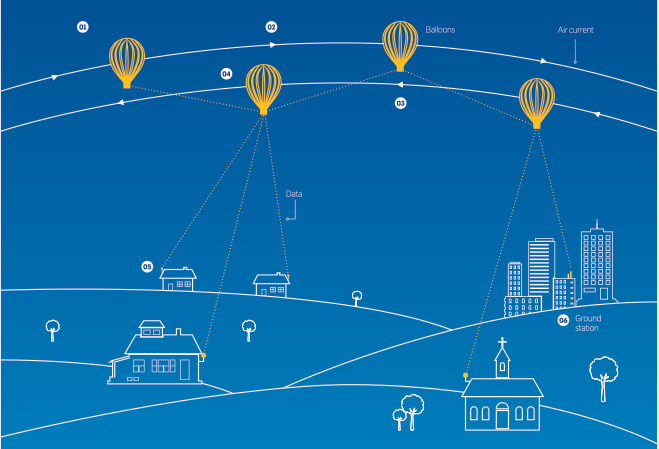Alphabet's 'Project Loon' To Deliver Cheap Internet To Indonesia
Alphabet, the new holding company that now includes Google and other Google spin-offs, partnered with three telecommunications companies from Indonesia to bring Internet access to the country's citizens through solar-powered balloons.
Project Loon sends solar-powered balloons 16,000 feet (5,000 meters) into the air, from where they deliver Internet access by connecting through radio signals to antennas on the ground. The Project Loon engineers came up with algorithms that would keep the balloons in the air for as long as possible by finding which winds can carry them along their plotted course.
Project Loon was originally a "moonshoot" experiment at the Google X division, which is now turning into a real business under Alphabet. Before the full service is launched, Alphabet and its three Indonesian partners will first launch only several hundred balloons over the country's more than 17,000 islands, to see where the gaps in service exist. The project has already been tested in Brazil, New Zealand and Australia.
Project Loon Vice President Mike Cassidy said that this was the first time it used signals from multiple telecommunications partners through the same balloon. He also expects this deployment to reach 100 million users.
"We've been kind of having an increasing succession of tests: tests for getting balloon flights to work, tests to test connectivity. It's super exciting that this is going to serve actual communities," said Sergei Brin, Google's co-founder.
Brin also added that it's much cheaper to deliver Internet access this way to a country that is full of jungles and islands, where traditional Internet access through cables or even through wireless cell towers would prove more difficult and more expensive.
Alphabet's Indonesian partners will use the trial period to determine the type of pricing and billing they will use, while the Project Loon engineers will work on the remaining technical issues.
Get Tom's Hardware's best news and in-depth reviews, straight to your inbox.
Before it became part of Alphabet, Google was also working on "Project Titan," which includes Internet delivery through solar-powered drones that are supposed to stay in the air up to five years. The company was also planning to invest $1 billion in SpaceX's satellite-based Internet access business.
______________________________________________________________________
Lucian Armasu joined Tom’s Hardware in early 2014. He writes news stories on mobile, chipsets, security, privacy, and anything else that might be of interest to him from the technology world. Outside of Tom’s Hardware, he dreams of becoming an entrepreneur.
You can follow him at @lucian_armasu. Follow us on Facebook, Google+, RSS, Twitter and YouTube.
Lucian Armasu is a Contributing Writer for Tom's Hardware US. He covers software news and the issues surrounding privacy and security.
-
TechyInAZ Great idea! Another advantage is the ping rates will still be extremely low, since it's not a satellite connection.Reply -
tanjali I am just waiting for a day that someone Use 100 year old Tesla techReply
in which he used The Earth ionosphere and radio waves faster than light 266 thousand miles per sec
to transfer video, pic and data (today's Internet) to other part of the Globe.
No lag , incredibly fast possibilities!
-
Urzu1000 ReplyThey'll think it's a great idea until the next typhoon
I assume they already thought this through, but I would be very interested in seeing how they do it. They might simply be elevating the balloons above the storms during bad weather. -
joex444 > radio waves faster than lightReply
Just so everyone's clear on this, that's not physically possible.

